On Saturday 24th June 2023 SRAP organised in collaboration with the Spanish Embassy in Canberra a visit to the two astronomical observatories in ACT (Australia Capital Territory): the NASA Deep Space Tracking Station in Tidbinbilla and Mt Stromlo Observatory. Almost 70 people, including many kids, enjoyed a full day of astronomy and space activities. The event was coordinated by our president, astrophysicist Dr Ángel López-Sánchez (Macquarie University).
Below you can find some photos of the event. A more detailed description will be added soon.
Visit to Tidbinbilla Deep Space Tracking Station
421 Discovery Drive, Paddy’s River District ACT 2620
(off Cotter & Paddy’s River Rds, Tidbinbilla)
We are extremely grateful to Glen Nagle (NASA Canberra Deep Space Communication Complex) for the passion and expertise that he showed.

Glen Nagle (NASA Canberra Deep Space Communication Complex) welcoming the participants.
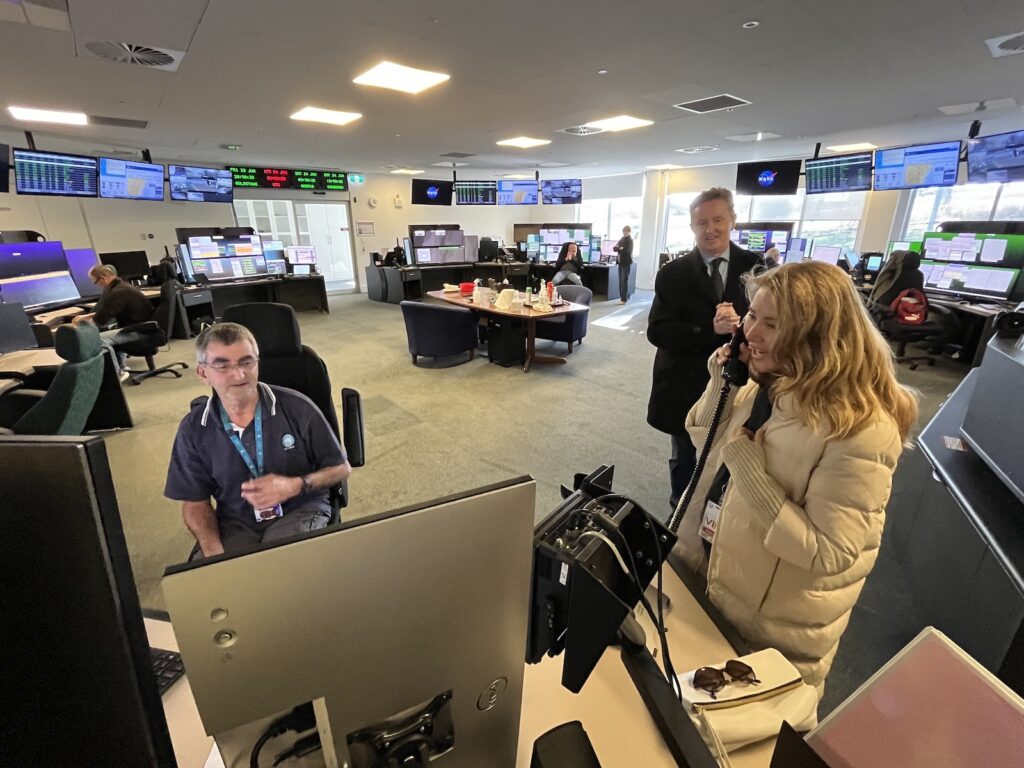
Glen Nagle (NASA Canberra Deep Space Communication Complex) welcoming the participants.

Glen Nagle (NASA Canberra Deep Space Communication Complex) welcoming the participants.
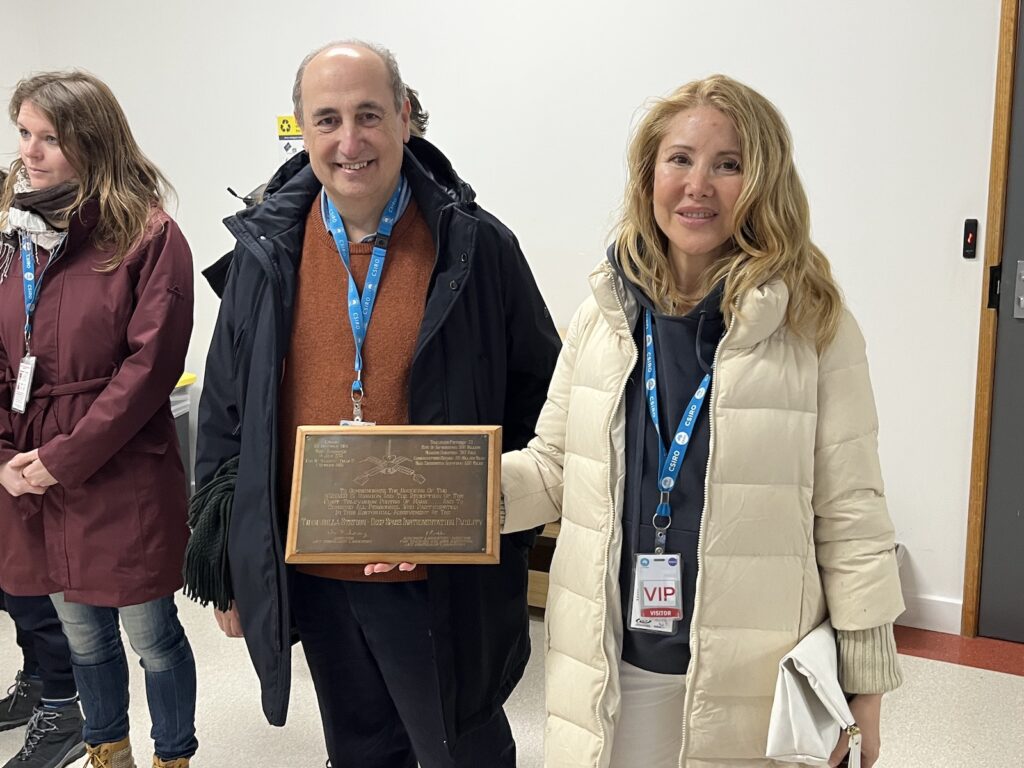
Prof Luis Salvador-Carulla and Montserrat Momán Pampillo.

Glen Nagle (NASA Canberra Deep Space Communication Complex) showing the control centre to group 2.

Group 1 in front of the 70-m radiotelescope.

Group 1 in front of the facility building with flags of the 3 countries where the NASA Deep Space Tracking Stations are located.

Montserrat Momán Pampillo (Spanish Embassy in Australia) talking to the staff of the NASA Deep Space Tracking Station in Madrid.

Group 1 in the Control Room.

Group 2 in front of the 70-m radio telescope.

Group 2 in front of the facility building with flags of the 3 countries where the NASA Deep Space Tracking Stations are located.

Group 3 in front of 70-m radio telescope.

Group 3 in the control centre.
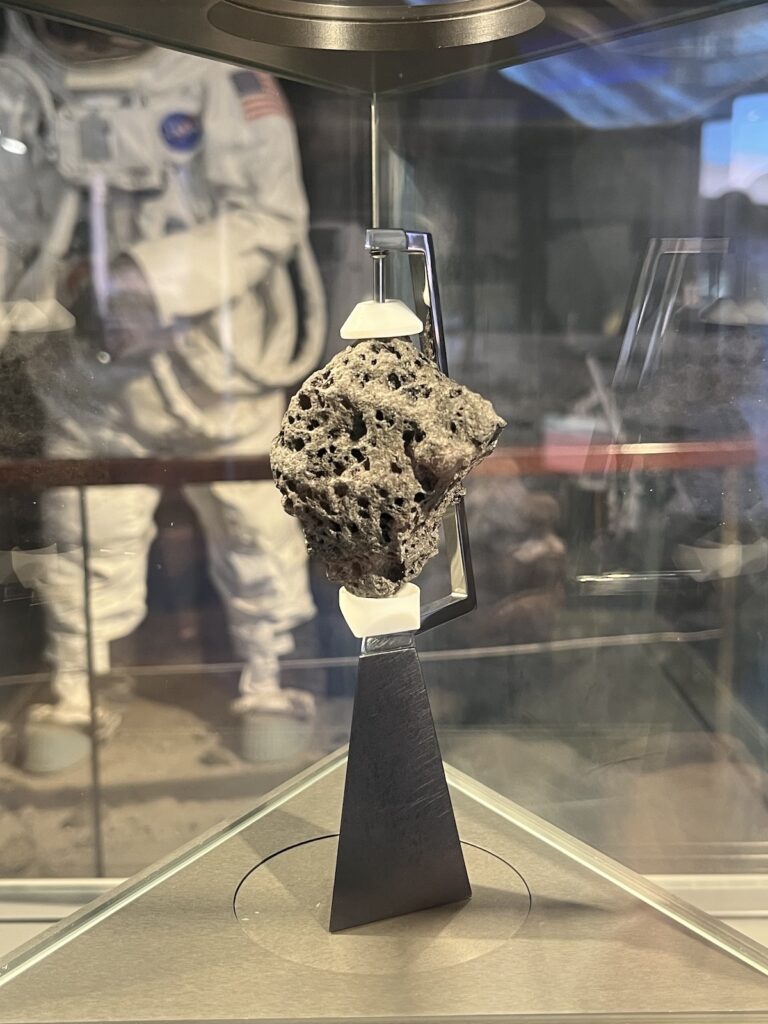
A piece of the moon donated by astronaut Buzz Aldrin.
Visit to Mt Stromlo Observatory
Research School of Astronomy & Astrophysics Mount Stromlo Observatory
Cotter Road Weston Creek, ACT 2611 Australia

Dr Ángel R. López-Sánchez (MQ & SRAP President) during his talk at Mt Stromlo.
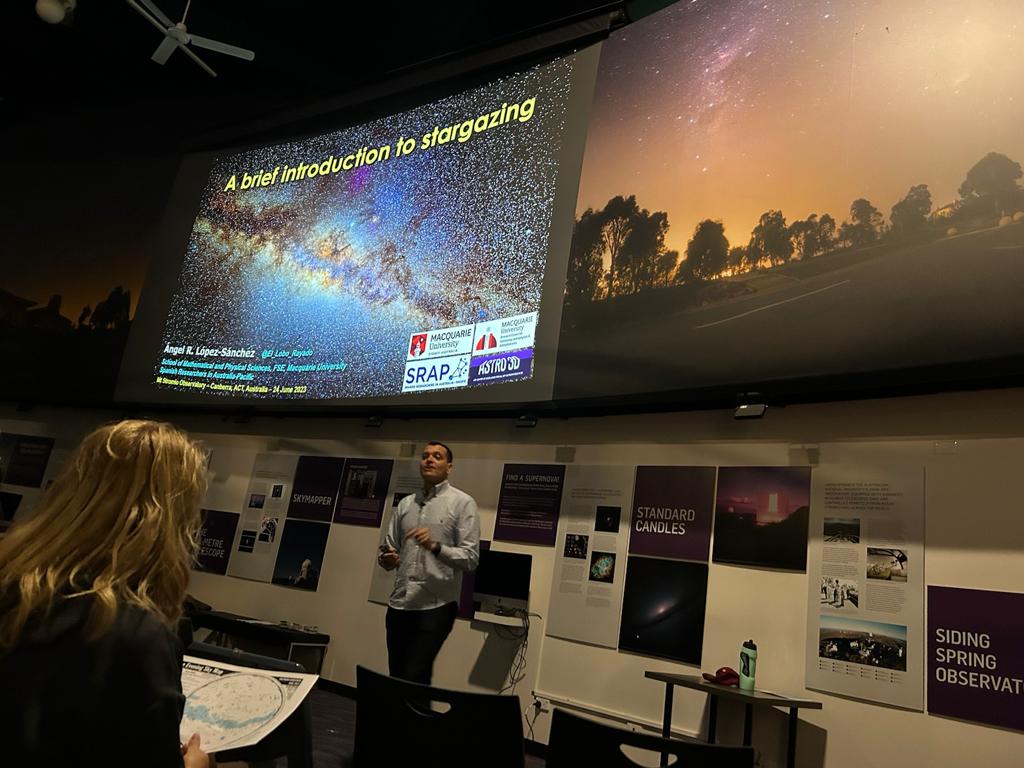
Dr Ángel R. López-Sánchez (MQ & SRAP President) during his talk at Mt Stromlo.

Visiting the research and engineering facilities at Mt Stromlo Observatory.
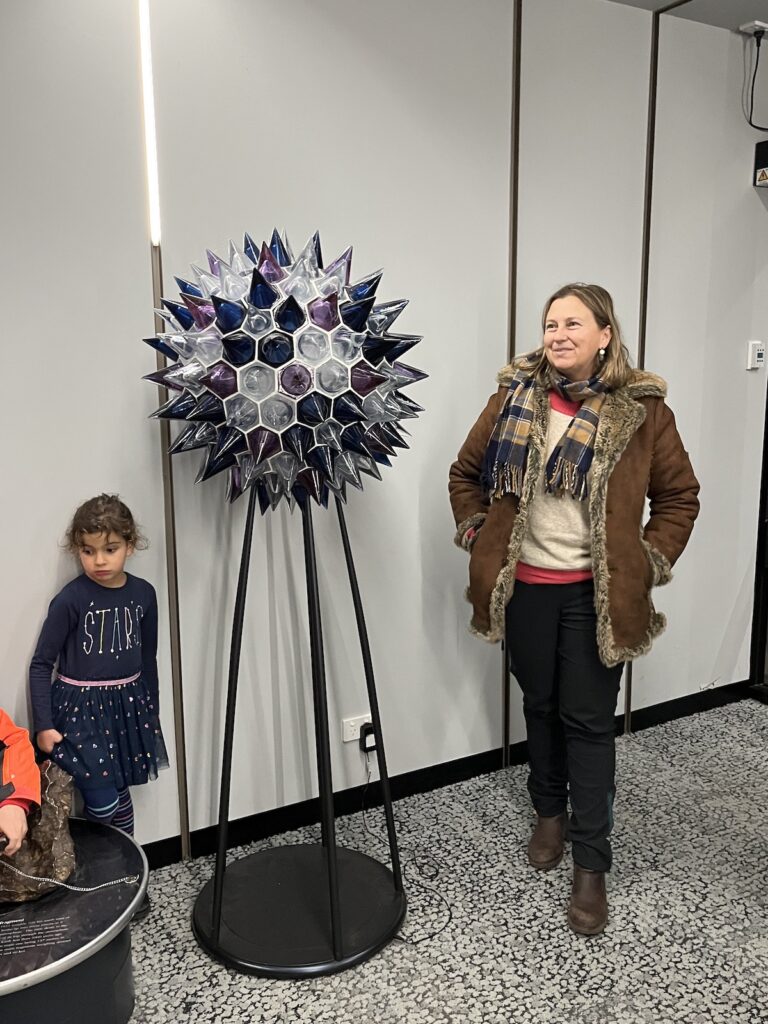
Dr Paula Llull and the Supernova Lamp at Mt Stromlo Observatory.
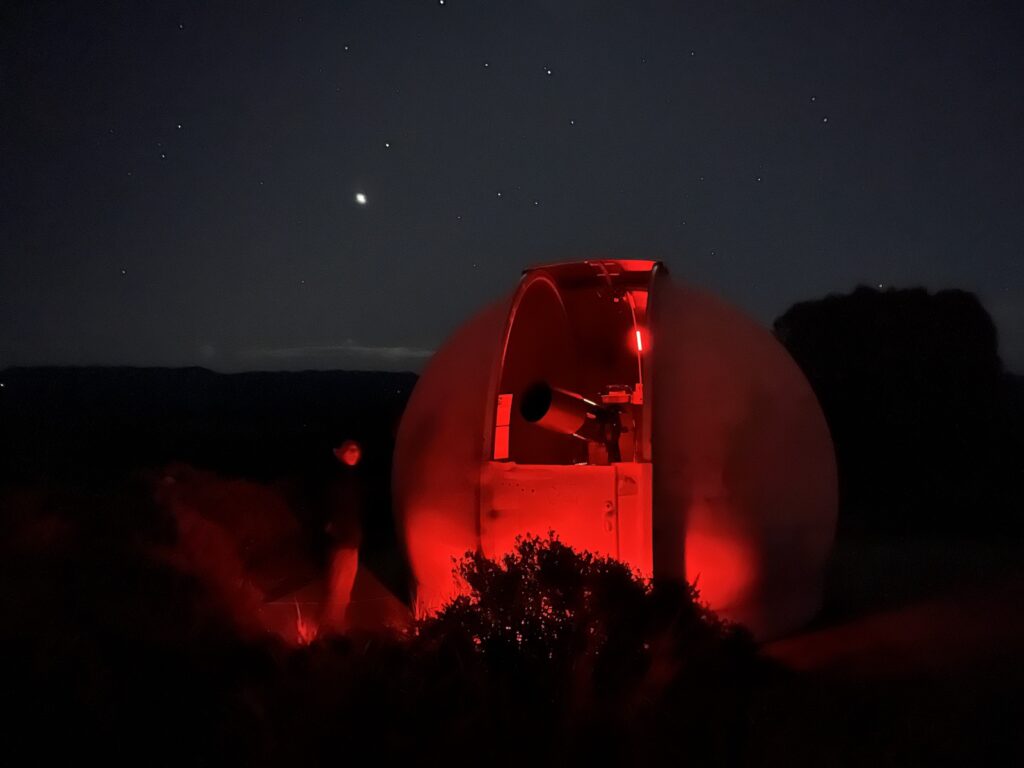
Stargazing at Mt Stromlo Observatory.
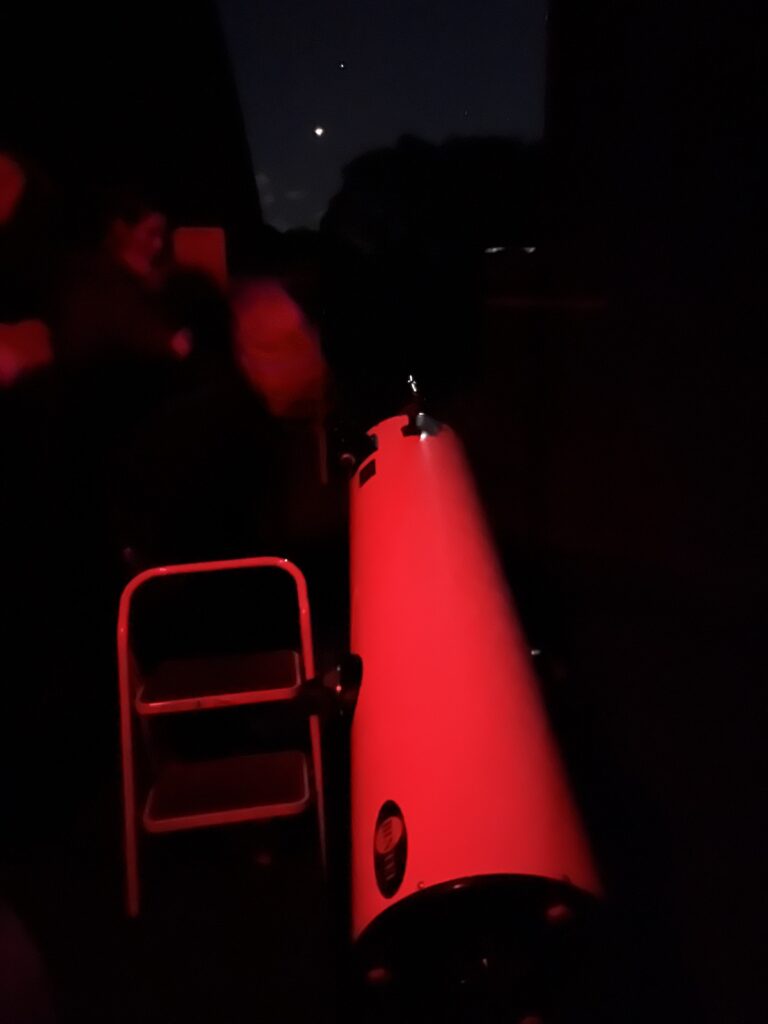
Stargazing at Mt Stromlo Observatory. The two bright stars in the sky are actually Venus (brightest) and Mars.




















